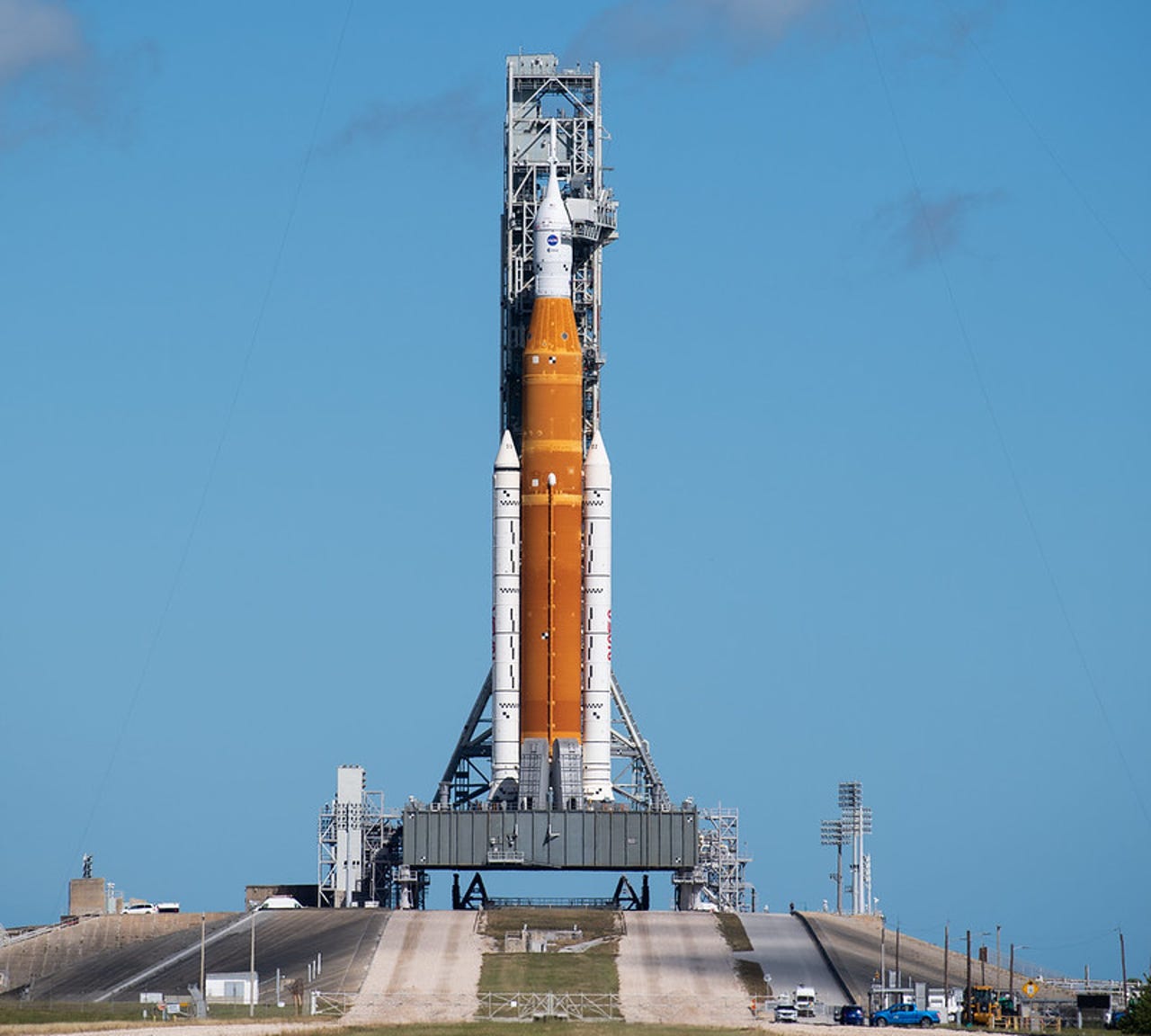NASA says Artemis SLS Moon rocket is good to go for next launch attempt


NASA's Space Launch System rocket with the Orion spacecraft aboard is seen atop the mobile launcher at Launch Pad 39B, Friday, November 11, 2022
NASA's Artemis 1 mission management team have given the all clear for the giant Space Launch System (SLS) rocket and Orion spacecraft to proceed with the next launch attempt on Wednesday, November 16.
The SLS rocket survived relatively unscathed during its exposure to Hurricane Nicole, a Category 1 storm that swept through Florida's West Palm Beach area on Friday. NASA has a two-hour launch window at 1:04 a.m. EST Wednesday. The countdown clock will begin at 1:54 a.m. Monday, it said.
Rather than roll the SLS back on the nine-hour journey to the Vehicle Assembly Building, NASA opted to tie it down at the launch pad.
Innovation
This will be the third launch Artemis 1 attempt after technical difficulties forced NASA to give up on the first two attempts. The Artemis 1 mission is a test run around the moon and back to Earth in preparation for future human-led missions to the Moon and beyond.
Also: What is Artemis? Everything you need to know about NASA's new moon mission
According to NASA, the 321 foot (97 meter) SLS rocket is designed to "withstand 85 mph (74.4 knot) winds at the 60-foot level with structural margin." Category 1 storms carry winds of between 74 mph and 95 mph.
The US National Weather Service reported on Friday wind gusts of 100 mph occurred at Kennedy Space Center's launch pad 39B, where SLS is launching from. But it happened at a height of 457 feet above ground level.
"There was also a wind gust of 93 mph at a height of 382 feet. However, the highest gusts at lower elevations reported thus far, have been in the 70 to 75 mph range," it said.
NASA's SLS engineers said the sustained and peak winds experienced during the storm had no adverse effect on the structural strength of the rocket. There was, however, some minor damage.
"While varying peak winds were measured by sensors at different heights at the pad, all measurements remained below 75% of SLS design limits, which also are intentionally conservative," NASA said.
"Technicians also are working to fix several minor items from the storm. Most repairs involve loose caulk or weather coverings. An umbilical used to provide purge air, or proper environmental conditions to the Orion spacecraft, was out of position. The umbilical maintained purge throughout the storm and has been repositioned to allow proper retraction at liftoff. Engineers have also removed the hard cover over the launch abort system window installed before the storm and will inspect the window to confirm it is in good condition for launch."